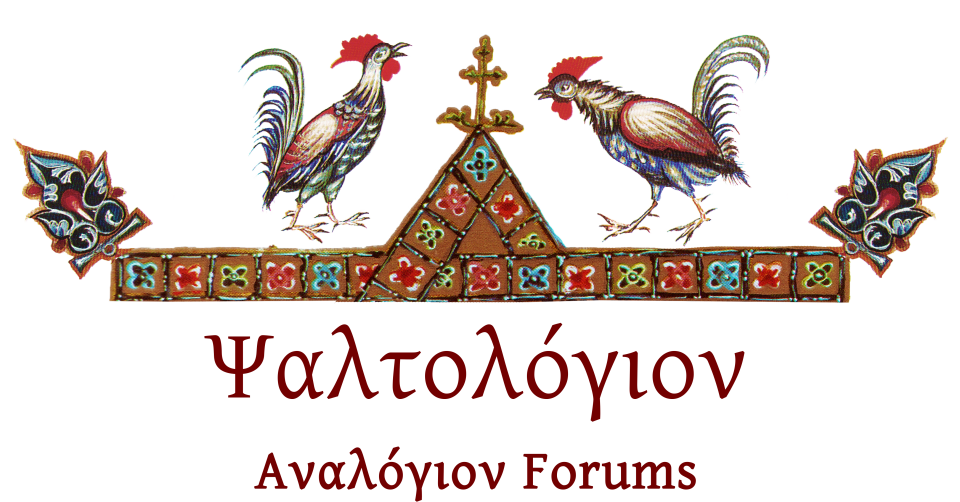Here is a link of Stefano Parenti's paper "The Cathedral Rite of Constantinople: Evolution of a Local Tradition":
https://www.academia.edu/2164351/The_Cathedral_Rite_of_Constantinople_Evolution_of_a_Local_Tradition
Its main conclusion can be summarised in author's own words as follows: "This article studies the evolution of the Liturgy of the Hours at Constantinople after the ninth century, when not only the monastic churches of the city, but also secular churches followed the liturgical tradition referred to as "hagiopolitis". Only the Cathedral was left using the rite appropriately called "ekklisiastis". The article also analyses particular forms of "bi-ritualism" between these two liturgical systems, with the tendency to conserve the "ekklisiastis" rite during the most important times of the liturgical year. Contrary to what was previously believed on the subject, the eleventh century was not the zenith of the cathedral tradition of Constantinople, but rather an age of decadence and abandonment".
Thank You for the information. In my opinion it will be helpful for the persons who are interesting on Asmatic Liturgy of the Hours to see also the « S. PARENTI, «Towards a Regional History of the Byzantine Euchology of the Sacraments» Eor 27 (2010), 109-121»•[
https://www.academia.edu/2065700/To...of_the_Byzantine_Euchology_of_the_Sacraments][a work which is presenting the tradition of Euchologion generally and that of Constantinople].See also his work «L´Eucologio slavo del Sinai nella storia dell´eucologio bizantino», ἀνάτυπο ἀπὸ τὸ Seminario del Dipartimento di Studi Slavi e dell´Europa Centrale-orientale. Università di Roma “La Sapienza” [Filologia slava 2], Roma 1997.[The professor presnts the various local traditions]
The work of the Bishop of Eichstatt [Under the guide of Robert Taft] Gr. HANKE, Vesper und Orthros des Kathedralritus der Hagia Sophia zu Konstantinopel. Eine strukturanalytische und entwicklungsgeschichtliche Untersuchung unter besonderer Berücksichtigung der Psalmodie und der Formulare in den Euchologien (Teil I-II)[Ἀνέκδοτη διατριβὴ ἐπὶ διδακτορίᾳ στὸ Philosophisch-Theologische Hochschule St. Georgen], Frankfurt am Main 2002] [An analytic work which is giving many answers to the history of cathedral tradition]
And the work of Π. ΚΑΛΑΙΤΖΙΔΟΥ, «Τρία χφφ «Πατριαρχικὰ» Εὐχολόγια: Paris, Coislin 213, Grottaferrata Γ. Β. I, Ἐθνικῆς Βιβλιοθήκης τῆς Ἑλλάδος 662. Ἱστορικοκριτικὴ προσέγγιση» στὸ Π. ΣΚΑΛΤΣΗ-ΝΙΚΟΔΗΜΟΥ ΣΚΡΕΤΤΑ (Ἀρχιμ.)(ἐπιμ.), Γηθόσυνον Σέβασμα. Ἀντίδωρον τιμῆς καὶ μνήμης εἰς τὸν μακαριστὸν καθηγητὴν τῆς Λειτουργικῆς Ἰωάννην Μ. Φουντούλην († 2007), Τόμος Α’, ἐκδ. «Ἀδελφῶν Κυριακίδη α.ε.», Θεσσαλονίκη 2013, 827-994.[A master piece to understand the influence and the structure of the Euchologion in Constantinople- the author presents the structure of the three manuscripts, the local rites and the new trends at their time, and the influence that these manuscripts received from Monastic Tradition] Also in L´Eucologio MG 53 (sec. IX) del Monastero di S. Caterina del Sinai [Τὸ ὑπ. ἀριθμ. ΜΓ 53(Θ'αἰ.) Εὐχολόγιον τῶν Νέων Εὑρυμάτων τῆς Ἱερᾶς Μονῆς τῆς Ἁγίας Αἰκατερίνης τοῦ Σινᾶ]I present the differences of the prayers among the Barberini gr. 336 (VIIIsec ) Coislin 213 (1027) and MG 53 (IX sec)
About the influence of Jerusalem to Constantinople see the
« S. PARENTI, «Da Gerusalemme a Costantinopoli passando per Studios e Mar Saba: una Liturgia modello per l´Ortodossia» L. VACCARO (a cura di), Da Costantinopoli al Caucaso. Imperi e popoli tra Cristianesimo e Islam, Libreria Editrice Vaticana, Roma 2014, 99-120•» [
https://www.academia.edu/6070832/_D...di_L._Vaccaro_Citta_del_Vaticano_2014_99-120]. The professor presents the influence of Jerusalem to Constantinople and in which sources we found them.
About the EBE 2061-2062 see the work of Γεωργίου Κοσμᾶ, Ἡ ἑβδομαδιαία ἀντιφωνικὴ κατανομὴ τῶν ψαλμῶν καὶ τῶν ᾠδῶν, εἰς τὰς ᾀσματικὰς ἀκολουθίας ἑσπερινοῦ καὶ ὄρθρου. Ἑλληνικοὶ Μουσικοὶ Κώδικες 2061-2062 Ἐθνικῆς Βιβλιοθήκης Ἀθηνῶν [Ἀνέκδοτη διατριβὴ ἐπὶ διδακτορίᾳ στὸ Τμῆμα τῶν Ἀνατολικῶν Ἐκκλησιαστικῶν Ἐπιστημῶν (Scienze Ecclesiastiche Orientali)τοῦ Pontificio Istituto Orientale], Romae 1976.[It is published in a certain number of exemplars- The work presents in an analytic mode the division of the Psalms during the week and their antiphons]. Also the work of Al. Lingas , Sunday Matins in the Byzantine Cathedral Rite: Rite and Liturgy, The University of British Columbia 1996.
About the musical manuscripts see the work of Simon Marincak, The Structure of Byzantine "Orthros" according to the XIVth Century "Taxis tôn Akolouthiôn" Musical Manuscripts, Vydavatel'stvo Petra, 2004.[Advisors: M. Arranz- Ch. Hannick- R. Taft].
